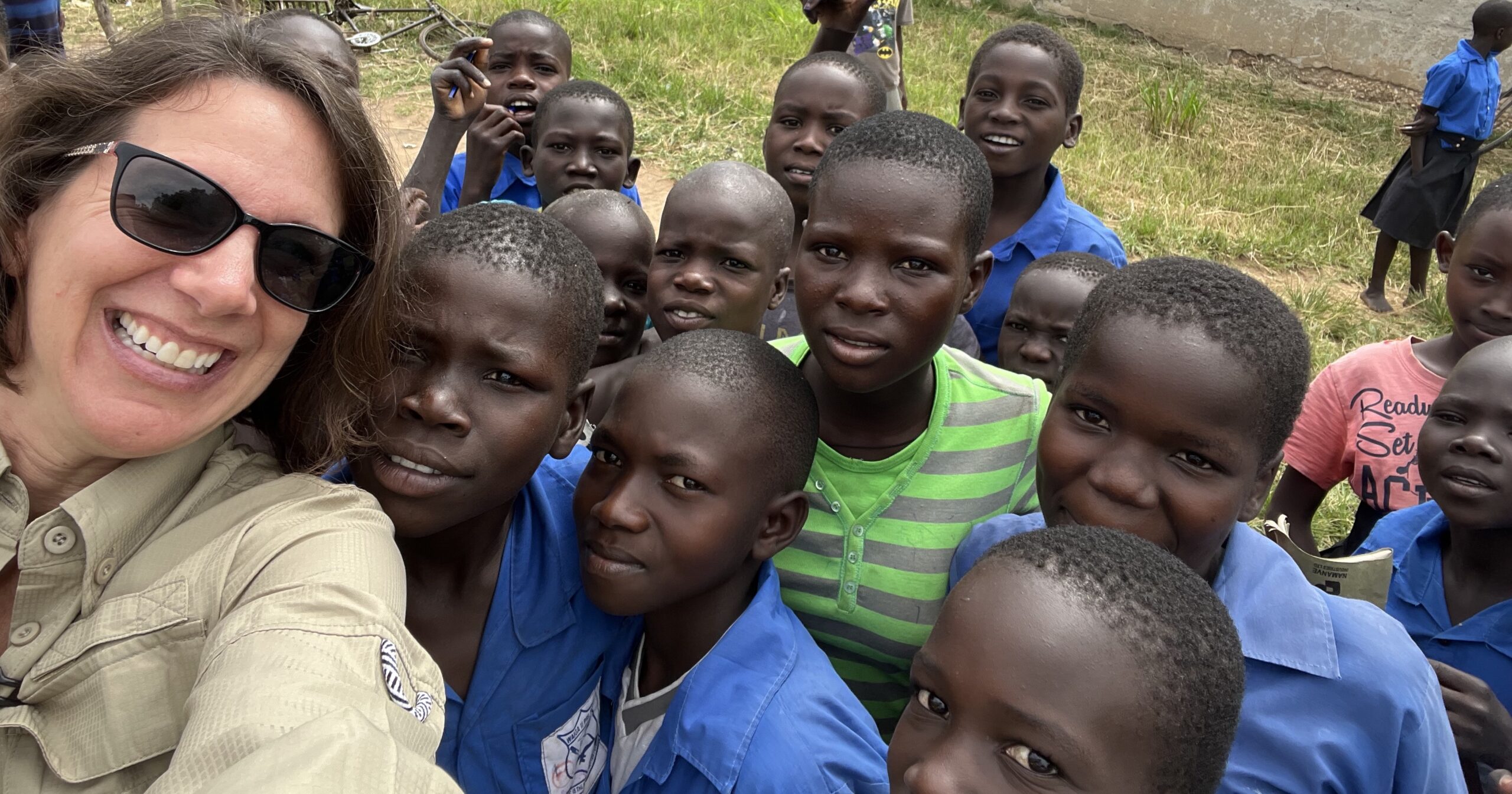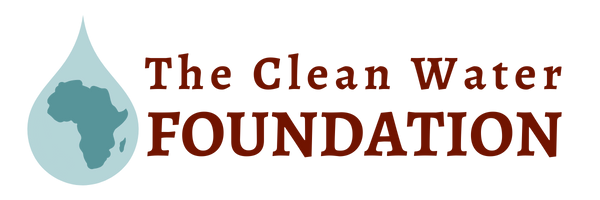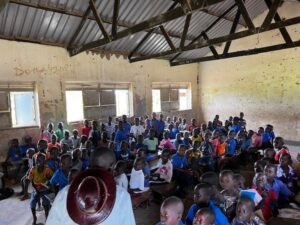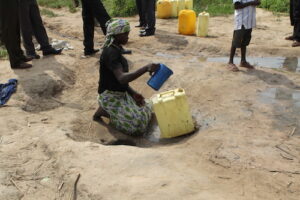
My father Cliff Steele, is the Founder of TCWF. In October 2022 I traveled with my husband Paul and Dad, Mom to visit several Uganda villages that are served by TCWF’s water projects. Trusted project managers are in Uganda, but he wanted to go and we wanted to go with him. He warned us: “you will not be prepared for this experience.” He was right.
The people in the villages, and throughout Uganda are sweet, beautiful, and kind. We celebrated their successes together with singing, dancing, skits, offering of food, and exchanging of gifts. They are anxious for better access to water, education for their children, and local health centers. Each village welcomed us like royalty, and we were so excited to be with them.
Getting there
It takes a long time to get there. A flight to Uganda takes 3x as long as travel to many European countries and then getting to the villages is even more challenging. Most of Uganda consists of towns and small villages connected by dirt roads, and only some are paved. While some dirt roads are well traveled, others, especially those leading to villages, rarely see cars. Most roads do not have names, signs, lights at night, and they aren’t on Google Maps.
Transportation between villages
Lucky for us, there is Milton, our experienced driver who is also TCWF’s Country Coordinator for the past 12+ years. Milton expertly navigates the roads despite potholes, rocks, and a lack of lanes & road signs. He speaks English and 57 dialects of Swahili, drives international travelers every day, and has been doing this for years. It seems like everyone we pass knows Milton.
Is there a Holiday Inn nearby the villages?
No. There are no hotel chains. We stayed at a lodge in a national game reserve where we “glamped” by the Nile river, listening to hippos call to each to other at night.
DAY 1 Kitongozi Village
Each village asked us to sign their guest book when we arrived. A glance through each book shows how few outsiders visit these hidden communities through the years. Who visits? Maybe someone from the health department. Probably no one from another country, and certainly no white person.
Before we met the Kitongozi villagers, we went to see the well TCWF drilled there last year. The drilling company found the best place to drill for water in the middle of a cornfield. So Milton drove us as close as possible to the well, and then we walked 1/4 mile through the cornfield to get there.
In the center of Kitongozi stands a giant tree, the “community tree.” In its shade, we sat on lawn chairs on one side, while the community sat on the ground across from us. We followed an agenda they prepared. First everyone stood and sang the national anthem, then we listened to speeches. Community leaders welcomed us, Milton spoke, Stephen (TCWF Project Coordinator) spoke, Cliff (my dad) spoke, and then they asked me to speak. The school children then entertained us with a poem about the benefits of clean water, and performed a song and dance.
Cliff asked to meet privately with the “elders,” (the leaders of the community) and he talked to them about the importance of saving money for when the well needs repairs
DAY 2: Waga Village
The next day our truck was greeted in Waga by women and children of all ages having a great time dancing and singing. So I jumped out of the truck and joined them. Video by my husband proves they were much better dancers, but I didn’t feel judged; I had a blast!
We went through a similar agenda here as we did in the previous village: singing of the national anthem, speeches, multiple performances of dances and skits.
Day 2: Pandinga Village
This was planned to be the grandest visit since we were celebrating 10 years of friendship with the village, and Milton’s birthday. I’m told that Pandinga has changed a lot in the 10 years since TCWF’s first project there. Dad remembers walking part way to get to the village 10 years ago because the truck couldn’t get through.
The community went all out for our visit. They rented tents, a DJ and a sound system & generator. There were hundreds of people, lots of entertainment, and speeches. We toured the village, the farmland, the water spigots, the well, and the solar pump and water tower.
DAY 3: Kakabala Village
This village had a similar agenda as the others, yet it was a new experience. Again we had lots of entertainment, also with sound equipment, and tents for us to sit beneath. This time when we met with the elders, we were offered a meal of fish stew, banana “bread”, rice, and peanut sauce.
The experience of meeting and engaging with the people in these communities was an unforgettable experience. I found that like me, they want to care for their families, see their children become educated, and be healthy. I returned home feeling more inspired to help TCWF.
*** Note: The Clean Water Foundation is an NGO and 99% of funds raised go directly to water projects in Uganda. We personally paid for our visit to Uganda.


